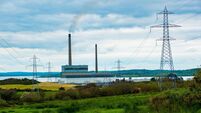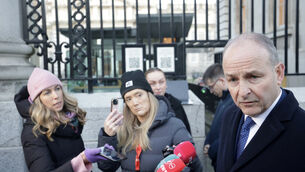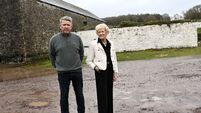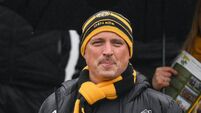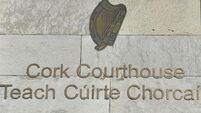Defence Forces played key role in ensuring State’s stability during Troubles
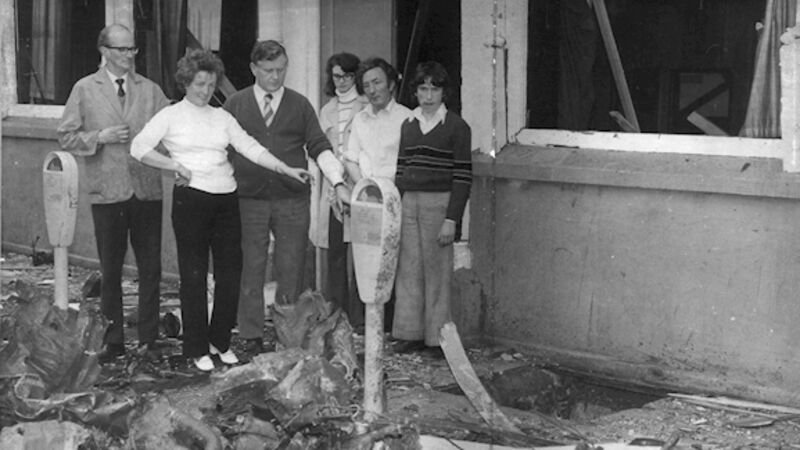
Taken together, the many incidents and happenings that occurred in the south during the Troubles 1969-1998 represented a serious threat to the stability of the State.
Historically, from a Defence Forces perspective, it was manpower, equipment, procedures, and training that made internal security operations possible and it was skills, expertise, and experience that made them successful.
Organisationally, it was all about capacity and capabilities; operationally, it was all about command and control; individually, it was all about commitment and courage.
Soldiering against subversion required dedicated people prepared to withstand difficulty and hardship, poor pay and conditions, and yet be prepared to risk their lives in the process.
The ‘what’ of government security policy was the preserve of the politicians, the ‘how’ of its implementation the problem and remit of the security forces.
The North, convulsed, had begun to fall apart and, from a starting point of chronic underinvestment and lack
of preparedness, the Irish security forces, despite the pressure of events, had to prevent the Republic going the same way.
Mostly, the security forces’ involvement appeared overtly undramatic and unspectacular, their consciously ‘low-key’ presence, posture, and persistence went largely unnoticed and certainly unheralded, yet it was absolutely crucial.
To disrupt the danger and threat from the terrorists, to counter the fear and intimidation from the subversives, to reduce the harm and hazard from the ‘balaclava bandits’ required competent people with a serious purposefulness.
The Troubles were grim, forbidding, and severe times, best forgotten; only omitted along with them has been the
unwavering loyalty, the steadfast reliability, and the staunch patriotism of the Defence Forces. To examine this period in the State’s history is to understand the need for an army, an army that when tested did not falter.
The outbreak of large-scale violence in the North caused deep unease that it could precipitate a worse tragedy throughout the entire island. With the North close to collapse, and decades of frustration and anger exploding into inter-communal violence, the danger of spillover into the Republic was a very real danger, one that was to persist for three decades.
The root causes of the conflict were difficult to get at and the Troubles lasted for far longer than anyone expected. From the beginnings of the conflict, the Irish government’s position was that there was no room for force or coercion in Irish policy towards the North.
Unity was only to be achieved through peaceful means, and, significantly, the rule of law must be maintained and made to prevail down south. To meet the ever-changing challenge of the Provisional IRA and other paramilitary groups involved Defence Forces intervention in civil affairs. This did not mean Irish soldiers acting as policemen, but rather in a role that was not quite military.
To achieve this, the Defence Forces had to conduct what were to become necessary everyday routine operations, followed intermittently by intelligence-led or reactive surge operations. However, throughout it all, An Garda Síochána took the lead and the Defence Forces aided them.
Democracy had to be defended, society secured, and the State kept stable. In the prevailing, highly charged circumstances, force may have had to be used, or available to be used, against those groups attempting to subvert the State.
An Garda Síochána was essentially an unarmed force, a position favoured by themselves, the Government, and the public. Notwithstanding, with armed, lawless, and dangerous subversives at large, public outrage at the killing of gardaí would not be enough to protect them. Force had to be met by force and how it was applied was an all-important matter; too little and with hesitancy would imply weakness while being too heavy-handed would be counter-productive.
The swaying of public opinion for or against the State’s institutions was an important consideration. Any approach regarding the use of force had to be measured, appropriate, and proportionate; there were hearts and minds to be won and lost.
For its part, the Provisional IRA held the Irish government in contempt, regarding the Dáil as an illegitimate institution, and operated outside the law with murderous intent.
The Aid to the Civil Power policy placed An Garda Síochána in the lead, with primacy over operations and the Defence Forces there to support them. It was a very wise policy and proved steadfast in such a difficult situation. There was a very close working relationship and regard for each other’s role. There was an overall mutual respect, but it has to be said without either force necessarily trusting the other wholeheartedly. The Defence Forces’ reservations stemmed from the nature of the Aid to the Civil Power role itself and the active application of it by the gardaí.
The Defence Forces defended Irish democracy, protected its people, and secured the safe functioning of the State’s institutions at a time of enormous tension and pressure against those who wished to undermine it and take upon themselves, without any legal authority or political mandate, to impose with the illegal possession of arms and use of force their minority vision of statehood and force it on the majority.
The Irish Republic was a sovereign independent State, with an elected parliament and courts, police, and army to enforce the rule of law. The Provisional IRAand others had no authority to exclude themselves from this arrangement. Notwithstanding, foot soldiers were sent out to wreak havoc, bomb indiscriminately, and kill without compunction. They had to be stopped and, in the South, the Defence Forces contributed hugely in this regard.
Former taoiseach Liam Cosgrave put it succinctly, and for all his retired life was consistent in his conviction, that:
except for the Garda Síochána and the Defence Forces there would have been no State.
The Defence Forces, in particular, protected the Irish political structure and organs of Government, standing in the breach against those who would subvert the State and undermine our democracy at the barrel of a gun.
The occasion of the 50th anniversary of the outbreak of the Troubles, generally regarded to be October 5, 1968, is an entirely appropriate time to historically review the Defence Forces’ heretofore unheralded involvement and to give it, for the first time, due recognition. The commitment, courage, and calibre of the soldiers of the Defence Forces who dutifully and loyally gave such steadfast service, working punishing round-the-clock duty rosters, patrolling along the border, manning permanent positions on the walled perimeter of Portlaoise Prison, and otherwise consistently providing armed protection for the gardaí and the people has rarely received its due acknowledgement.
It is too easy to forget those difficult days and it is dangerous to do so because the complexity of the fractured identity that was at the essence of the Troubles in a sense remains to be resolved.
Everyone struggled and suffered once conflict, with its abhorrent violence, became part of the scenario. The Defence Forces, however, played a crucial part and made a vital contribution to its containment.
IRA planned ‘Tet Offensive’ attack
The Provisional IRA planned a version of the North Vietnamese army’s 1968 ‘Tet Offensive’ attack against the Americans in Vietnam.
The IRA’s intention was to weaken the resolve of the British to stay in the North with a sharp, massive strike.
The IRA had been stockpiling weaponry, most of it supplied by Libya’s Colonel Muammar Gadaffi.
They smuggled four shipments of arms into Ireland and were waiting for the final piece of the jigsaw.
However, the offensive was called off after the MV Eksund was seized in October, 1987, by the French authorities. It contained 120 tonnes of weapons, including 20 SAMs (surface-to-air missiles), 36 RPGs (rocket-propelled grenades), 1,000 detonators, Semtex explosive and a million rounds of ammunition. The seizure was a major blow to the IRA.
In his book, retired Lieutenant Colonel Dan Harvey says the shipments that got through were mainly stored in larger bunkers in the south and shipped to smaller bunkers in the border counties, “or what the IRA called the war zone”.
The IRA’s Southern Command was known as a support area for training and weapons-holding.
“Why didn’t we know about them? It was an intelligence failure on our part. They were good,” said Lt Col Harvey.
He cites Unionist claims that there was “a nod and a wink” relationship between the Irish army and the IRA and says “there absolutely wasn’t”, outlining a number of incidents when off-duty soldiers had run-ins with Provisionals.
One night in Monaghan town, “a highly active and dangerous member” of the IRA, who was later shot dead by the SAS in the Loughall ambush, had a clash with an Irish army officer, telling him: “We’ll get you.” The reply came: “You will, if you’re able.”
Meanwhile, in a pub in Dundalk, a group of officers were approached by some IRA men, and one told the officers they would be shot at some crossroads some day. He was grabbed by the collar and told that the IRA men would instead be shot in their beds. They backed off.
Mr Harvey also says that relations between the Irish army and the gardaí were not as good as the public might think.
He says that rule eight of the IRA’s ‘Green Book’ of orders clearly stated its members shouldn’t take on Irish security forces, a directive not followed on a number of occasions.
Freezing soldiers would be crouching in soggy ditches or on water-logged ground, while accompanying gardaí at checkpoints, “for the most part sat in their vehicles with the engine running and the heater turned on”.
Indiscreet gardaí would mention their rates and allowances, which did not go down well with the Defence Forces, who got much less.
He described relations as “institutionally strained” because senior gardaí were reluctant to operate a proper command-and-control structure.
However, on the ground, it worked better, especially if a soldier knew a garda because they were from the same area, or played GAA together. He said that, unlike the army, punctuality was not a priority for the gardaí, “who were more laid-back”.









